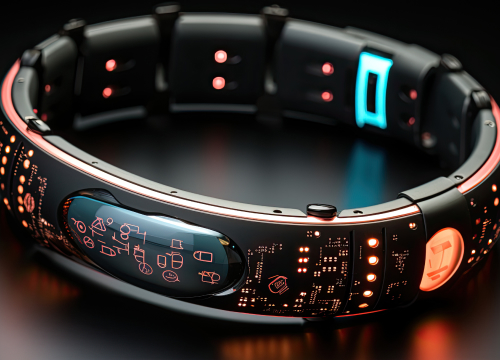
Remote IoT Device Monitoring: How to effectively manage remote devices

Remote management of IoT devices was developed to control numerous devices connected through Bluetooth, Wi-Fi, Zigbee, or other technologies. However, have you ever faced issues because of many devices connected simultaneously? If so, remote control of these IoT devices is required because of the large flow of uncontrolled data. This article contains a solution to manage these problems.
Remote management of the Internet of Things will become commonplace on the market before the end of 2030. Therefore, if you want to learn more about it, you have come to the right place!
Industries Benefiting Most from Remote IoT Device Management
Industrial Automation
The industrial automation industry employs a significant amount of functioning equipment that must be regularly monitored and tested. In addition, most IoT devices in the industrial sector are designed to detect issues with equipment. Therefore, the industry needs an IoT remote management solution.
As you have already surely realized, monitoring IoT devices is complicated. However, your IoT remote management would be more convenient with Sirin Software since our technical staff have worked with similar solutions and knows these solutions inside and out. If issues occur, the device will notify you of the problems and how to resolve them. This is beneficial because it allows you to handle issues immediately. Without the ability to remotely control IoT devices, you would discover a problem only if you had decided to test all of your industrial automation equipment.
Smart Home
Like the industrial automation industry, the smart home sector generally contains numerous linked IoT devices that must be regulated.
Smart home devices include the following:
- Sensors that record movement, temperature, and humidity level, lighting controllers, and other parameters.
- Actuator devices include light switches.
- Control center that connects devices into one network.
Smart home devices are typically controlled by mobile phones or control panels. Remote management allows for the remote control of IoT devices in homes or workplaces. For example, consider forgetting to turn off the lights at your workplace. You can use a mobile phone application instead of returning and manually turning them off. You could also see if your devices had been turned on or off. Sirin Software has been developing various smart home cases that will help you learn more about how to control IoT devices remotely.
One of the recent projects we undertook involved the development of a Controlled Air Supply System System for Heating-Conditioning for Smart Houses (Learn More). Our team successfully engineered a smart ventilation system comprising compact devices installed on all air inputs. These devices effectively regulate air distribution, enabling tenants to maintain a precise and consistent temperature within their residential spaces with an impressive accuracy of +/-0.5°C.
More devices are being launched into the smart home market, necessitating the adoption of a convenient remote control system.
Guide to Remote Management for IoT Devices
Preparation and Configuration
The first and most valuable step for IoT device remote management is preparation and configuration. The challenge is that a device must be connected properly to the Internet with good connectivity. To begin, you should create an account. Then you should register your device between the solution and a device, or multiple devices if needed. This allows you to transmit commands to multiple devices simultaneously. You can, however, register devices separately and make them autonomous. Finally, you should configure each device according to its specifications, which is critical for the future functionality of your devices.
Authentication
Our next step is authentication, which is essential since it allows identifying devices within the IoT system. It also assists in the prevention of unauthorized access.
To perform authentication, you should configure the device and network security settings. Configuration is required to allow or deny access attempts. Each device has its certificate and key for the verification of authenticity. The authentication process is specific to each device. Furthermore, serial and model numbers are used to verify identity.
As we have just mentioned authentication, let’s delve into Sirin Software’s recent “Sierra” project and examine how it operates.
Step 1
Device authentication occurs after each device is programmed, where it receives an open certificate and registers in the system, known as a bind-server. This system stores data about the manufactured device, including the serial number and component identifiers.
Step 2
During the device network connection, certificate presence is checked and plays a crucial role in this step. If a certificate expires, a request is made to obtain new certificates. Thus, an open certificate from the factory is used, along with additional information about the device, such as the processor ID, serial number, etc. It is important to note that data protection is provided by the https protocol.
Step 3
Cloud services validate the received data, and new certificates are sent to it if the device was registered during production.
Step 4
Once the certificates are received and verified, the device switches to encrypted communication paths.
Step 5
When the certificates are received and verified, they are transmitted to encrypted communications. The cloud has a specialized service for decrypting data received from the device. The DTLS technology provides data encryption, and the encrypted data is transmitted over the network without additional protection from network communication protocols.
Step 6
After successful decryption, the data is transmitted within the system through a secure private network.

Device Control and Secondary Configuration
After you have completed these steps, see if you can manage the devices after they have been initialized, authenticated, configured, and connected to the network. As a result, after installing your devices, it is vital to reconfigure them. For example, you can add complexity to a device or optimize its functionality using code. Moreover, due to new requirements, it is sometimes necessary to change configurations.
Testing the performance of a device is usually achieved through distribution and automation to automate the device process. Therefore, after activating a device, you can examine its performance while performing a task. If you discover any problems, you can fix them. For example, a device may function normally when completing specific operations, but difficulties may arise after adjusting configurations. As a result, device control and secondary configuration are used to deal with these difficulties.
Monitoring
Our next step is the Internet of Things monitoring to ensure efficient remote IoT device managing. First, you should examine how the monitoring process of your devices is working.
Check out the following list of things to look into:
System Indicators
Ensure your device’s monitoring dashboards correctly monitor the device’s uptime. Furthermore, system indicators must monitor other triggered and accumulated events.
Automated Reports and Notifications
To provide preventive maintenance, you should be able to receive updates on the performance of your equipment. In addition, considering that system failures, data loss, or decreased performance may happen, you should be alerted of system changes that might impact the device’s performance.
Security
Regarding security, you should have a platform that can identify vulnerabilities and issues in the system. For example, if there are flaws in the system that necessitate configuration changes, you must be notified.
Software Maintenance
You are probably familiar with the fact that IoT devices usually require complicated methods of software maintenance. Software functionality should also be maintained, as IoT devices are designed to last many years. As a result, maintaining a device’s operation is crucial, and you should be able to send firmware updates at any moment to improve the functionality of any network device.
Install a Manufacturer’s Firmware Update and Security Patches
You should update your firmware since this is crucial for fixing issues in the system and enhancing functionality. Speaking of security patches, you will need to install these mainly for security purposes.
Constant System Reports
You will require continuous system reports to monitor the performance of your devices.
Complete Diagnosis
After completing all mentioned steps, we recommend you fully diagnose a device’s network and functionality. With this step, you would be able to identify and fix issues without having to physically visit each installation point of a device.
Common Challenges You May Face While Managing IoT Devices Remotely
Diagnostics
When there is a significant number of connected devices, remote device management of IoT is challenging. Some people fail to undertake regular diagnostics, so they are more likely to experience numerous problems in the future.
Solution: Conduct a diagnosis in time. You can always rely on professionals if unsure that you can perform diagnostics successfully.
Cybersecurity
Unfortunately, cybersecurity is one of the major issues people are dealing with today. Unauthorized individuals might gain access to IoT devices connected to a single network, causing massive problems.
Solution: Register and authorize your devices, ensuring network security. Authentication is verifying that a device belongs to the network to prevent unauthorized people from accessing the network.
Power Consumption
IoT devices usually consume a lot of power, resulting in devices dying. As a result, you have to regularly check each of your devices to determine whether the device has discharged. In addition, this impacts the management of IoT devices since you cannot manage them remotely if they are not working or have low productivity because of a discharged battery. Thus, most companies must constantly change their devices’ batteries and conduct technical maintenance.
Solution: When choosing IoT devices for your project, seek devices with low energy consumption or devices that use Bluetooth since this technology consumes less power.

Tools
A high-quality tool is required to manage a remote IoT device. Therefore, we have collected the greatest solutions to help you manage IoT.
Look at the list below to learn more about the tools:
- AWS IoT: is a cloud-based platform that offers services for various security mechanisms. It enables data encryption and access control to data. Furthermore, device monitoring and network configuration auditing are at an outstanding level.
- Google Cloud IoT: a platform that allows for managed interactions. In addition, it provides analyzing and sorting data in the cloud. You can use this platform to determine whether optimization and maintenance are required.
- RakWireless: with the tools, you can manage your whole IoT network. It also configures, monitors, and maintains your system.
Unfortunately, these platforms offer just a foundation of remote device management solutions. To develop your platform or perform cloud migration of your existing remote management software, we recommend working with a partner who is familiar with AWS IoT and can provide you with improved monitoring and maintenance, as well as flexible configuration. As a result, we recommend that you develop your own platform with Sirin Software, since we can guarantee all the mentioned features and make your platform more personalized.
Choose Sirin Software as Your Trusted Partner
As you have already discovered, conducting remote IoT device management is challenging. You might make mistakes while configuring your devices, allowing unauthorized people to access your IoT network. As a result, most individuals rely on a company specializing in remote device management services. Furthermore, Sirin Software will create a one-of-a-kind IoT device management platform for you and your preferences.
Don’t risk your company’s security; instead, leave it to the professionals!
Conclusion
In the article, we have discussed the benefits of IoT remote device management. Guidelines on device management have been provided to help you manage your network. However, we don’t recommend configuring it all on your own. Instead, consider engaging the Sirin Software team, specializing in custom IoT development services.



